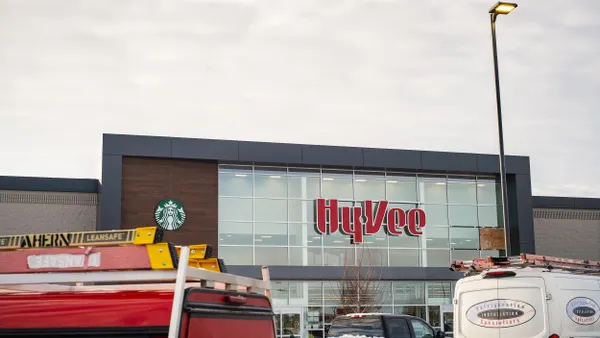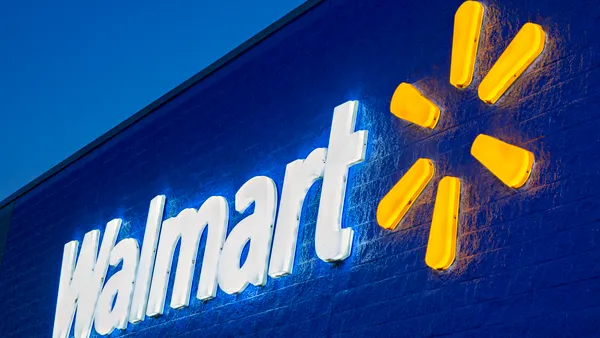The COVID-19 pandemic has been a catalyst for change in all industries since early 2020, with some of the most visible occurring in retail and restaurants. Health and safety concerns caused consumers to adjust their buying behaviors, including when, where, and how they shop.
No stranger to COVID's impact, grocery stores, quick-service restaurants (QSRs) and others in the food industry have had to pivot to a digital-first mindset with new websites and mobile apps; buy online, pick up in store (BOPIS) and delivery options; contactless payment methods and even self-service and self-checkout.
These innovations have enabled grocery stores and QSRs to meet consumers' demand for quick and easy ordering and payment, while creating loyal customer relationships along the way. However, an increase in digital activity can mean increased opportunities for fraudsters.
The rise of e-commerce fraud
In a study of 650 merchants in 2021, around three-quarters reported increases in both fraud attempts, and fraud rates compared with pre-COVID times. 1. From more revenue being lost to payment fraud to more eCommerce orders being rejected and leading to chargebacks, every single indicator for assessing payment fraud impacts has increased since 2019.2.
It's no surprise that nine out of 10 merchants now consider managing e-commerce fraud "very or extremely important" to their overall business strategy.3.
Where to focus fraud prevention efforts
"Friendly fraud," card testing, and identity theft are among the most prevalent types of attacks impacting the largest shares of merchants globally.4. Here's what grocers and QSRs can do to combat these types of food fraud.
1. Friendly Fraud
Friendly fraud, also known as first-party fraud, occurs when the customer requests a chargeback from their bank or card issuer after receiving a purchased product or service, but claims non-delivery of goods, a non-processed refund or another issue.5.
Globally, friendly fraud is now the number one most common type of attack experienced by merchants, who estimate that around 1.2% of their accepted eCommerce orders eventually turn out to be friendly fraud.6.
The solution:
Merchants should have a multi-pronged approach to combatting friendly fraud that includes customer notifications, clear payment and return policies, flagging unusual activity, and verification measures designed to check and confirm customer identities.7. Merchants should also prioritize certain categories of chargebacks to fight by filing formal disputes with financial institutions.8.
Ultimately, the best way to prevent friendly fraud is to work with a payments provider to prevent fraud and chargebacks in the first place by keeping chargeback ratios low through a managed risk approach and fraud prevention tools. This partner should also be able to recapture lost revenue by increasing issuer authorization rates and optimizing authorization conversions.
2. Card Testing
If a fraudster takes over a customer account or creates fake accounts, they can use automated tools to test the validity of stolen cards by attempting thousands of small purchases. This ends up costing merchants dearly in authorization fees.
The solution:
A sophisticated account takeover protection solution that includes transaction threshold rules and other vital guardrails can help to protect customers and businesses by distinguishing between fraudsters and genuine customers at account creation, account login, and when accounts are updated.
3. Identity theft and policy abuse
Customers often store their private information in merchant payment systems, making it a prime target for fraudsters looking to steal this stored payment card data, loyalty points, and valuable personal information. And fraudsters—or even otherwise good customers—may try to exploit loopholes in discount coupons, welcome offers, and other sales promotions.
The solution:
Merchants should find a payments partner that analyzes behavioral characteristics and monitors account events (creation, login, and update) to help identify account origination fraud and protect genuine user accounts from takeover by fraudsters. Tokenization can also be key to securing data and preventing identity theft issues.
Conclusion
Consumers' desire for the speed and convenience they have come to expect in e-commerce and self-service is driving a new and improved buying experience. Grocers, QSRs, and others in the food industry need to ensure they choose a payments partner that can help their stores detect, prevent, and manage fraud so they can focus on providing an exceptional customer experience.
To learn more about how to stay ahead in food service and restaurant payments, read Cybersource's latest e-zine.
1. https://www.cybersource.com/content/dam/documents/campaign/global-fraud-report-2021.pdf, p. 7
2. https://www.cybersource.com/content/dam/documents/campaign/global-fraud-report-2021.pdf, p. 9
3. https://www.cybersource.com/content/dam/documents/campaign/global-fraud-report-2021.pdf, p. 6
4. https://www.cybersource.com/content/dam/documents/campaign/global-fraud-report-2021.pdf, p.15
5. https://www.cybersource.com/en-us/blog/2021/4-changes-in-consumer-shopping-trends.html
6. https://www.cybersource.com/content/dam/documents/campaign/global-fraud-report-2021.pdf, p. 17
7. https://www.cybersource.com/content/dam/documents/campaign/global-fraud-report-2021.pdf, p. 17
8. https://www.cybersource.com/content/dam/documents/campaign/global-fraud-report-2021.pdf, p.17










